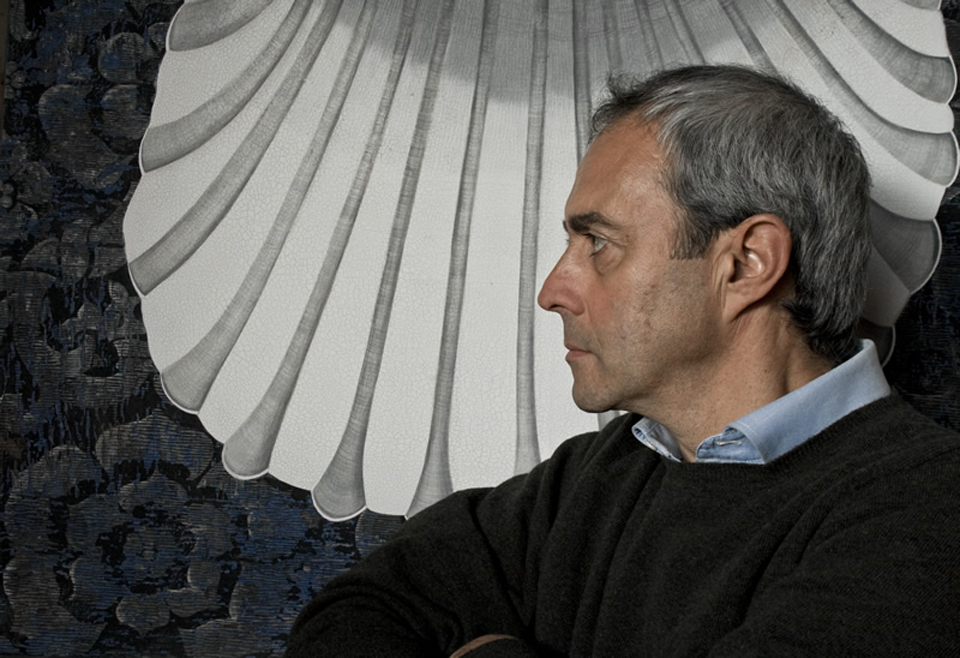Biography
Tommaso De Carlo (1959) graduated at the State Art Institute in Florence and started his apprenticeship in several Florentine artisan workshops where he learnt the techniques of intaglio and engraving to start working as an engraver in the production of artistic handicraft.
Later, working for various artisan teachers he acquired a solid professional training, learning the ancient pictorial and decorative techniques of polychromy and guilding that have been transmitted generation after generation for (since) centuries.
Later, working for various artisan teachers he acquired a solid professional training, learning the ancient pictorial and decorative techniques of polychromy and guilding that have been transmitted generation after generation for (since) centuries.
Today still Tommaso De Carlo composes his own colors with a wide variety of earths and natural materials in his own workshop located in an old monastery in Florence (Vecchio Conventino) since the 80’s working as an interior decorator surrounded by a group of other artists and artisans.
Starting from the antique techniques and from the decorative shapes typical of the Florentine area he developed his own style updating the traditional models of the Florentine Renaissance.
Starting from the antique techniques and from the decorative shapes typical of the Florentine area he developed his own style updating the traditional models of the Florentine Renaissance.

From his own words
For a commissioned work it is necessary to establish a deep relation with the client: it is essential to know his environment, to understand his world, his taste, his life style. When the planning is done in symbiosis, the personality of the client comes out through shapes and colors. The planning is the most delicate moment but also the most stimulating.
At that moment the shapes of the past and the varied iconographic repertoire become the source of inspiration and the search for a new creative process. Every artistic item has a deep link with the history, the knowledge of past styles is the best guarantee for the success of new creations and new languages. In a conforming society the artisan work represents a way to protect and express different individualities demonstrating the human variety.
The traditional materials used in my work are absolutely natural and the working processes are in harmony with the external environment. Old furniture can be recuperated through restauration and restyling, this method looks for the reuse of objects and their setting. My role is working to develop a taste and a style that are the fruits of a conscious choice. I believe that beauty represents an absolute value because through its search moral values like the Good and the Truth can be experimented.